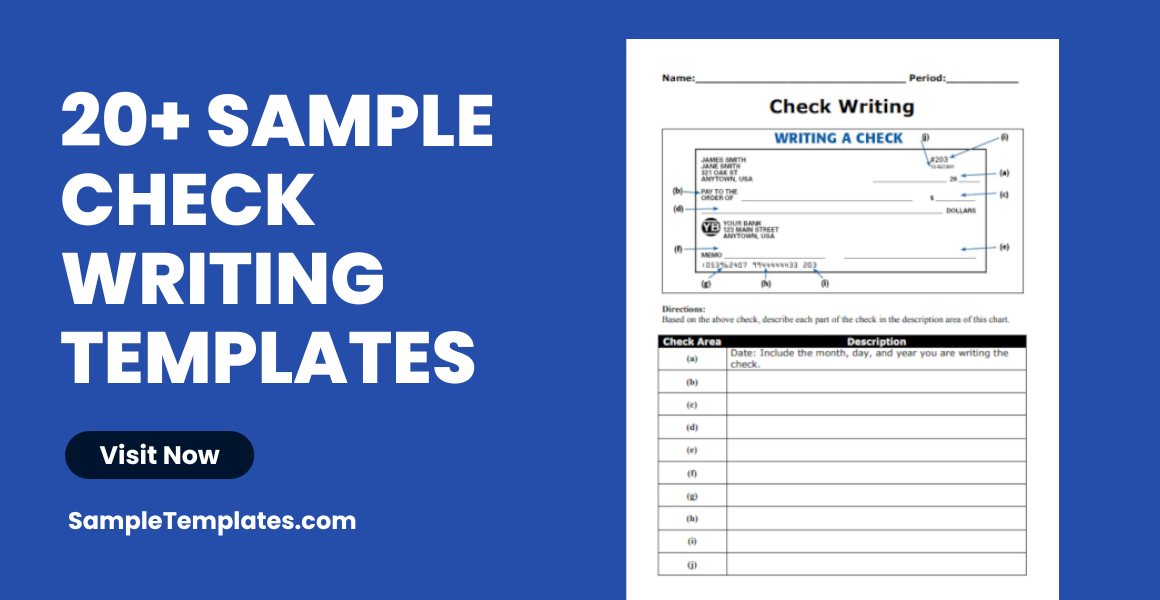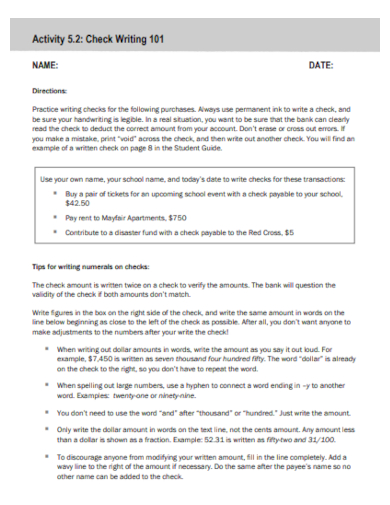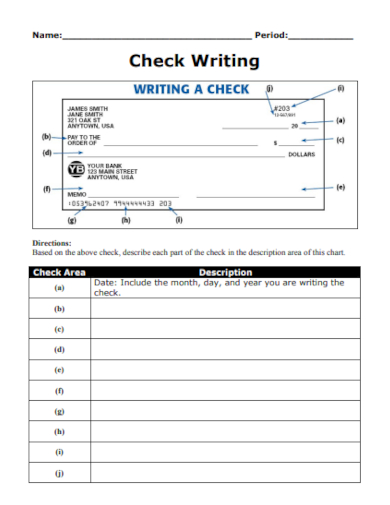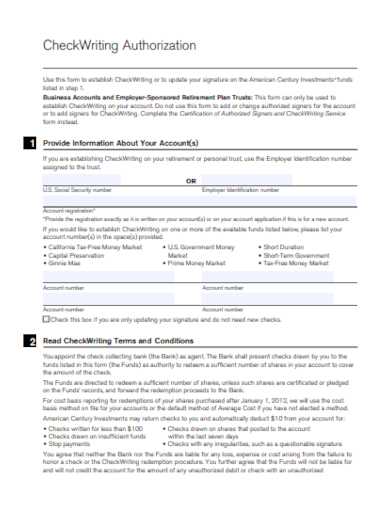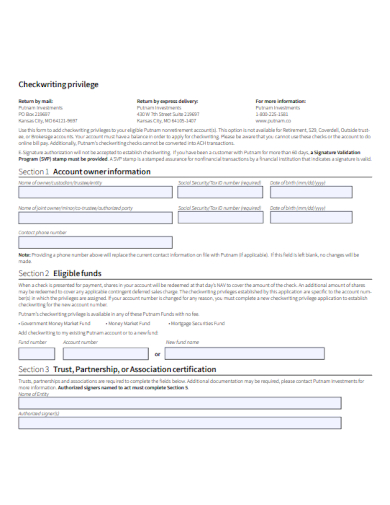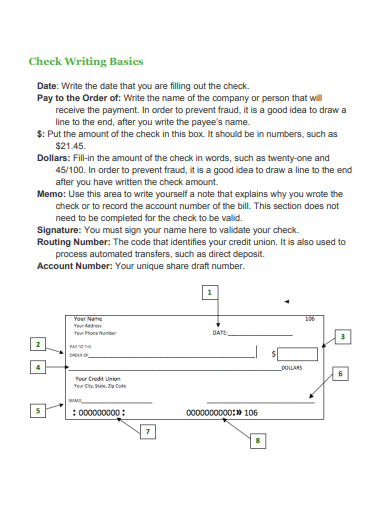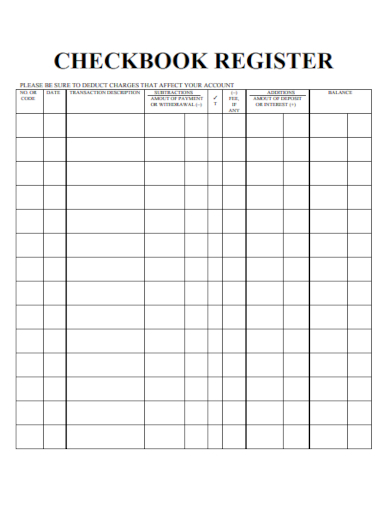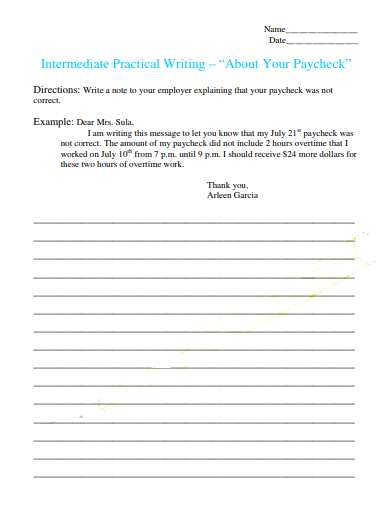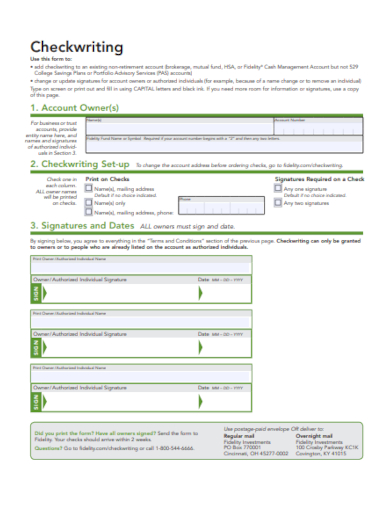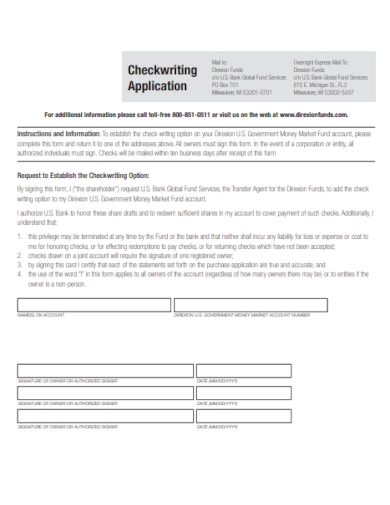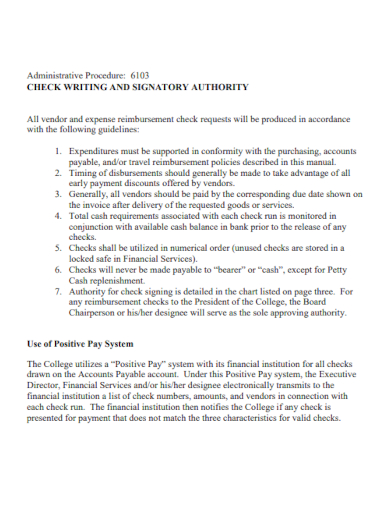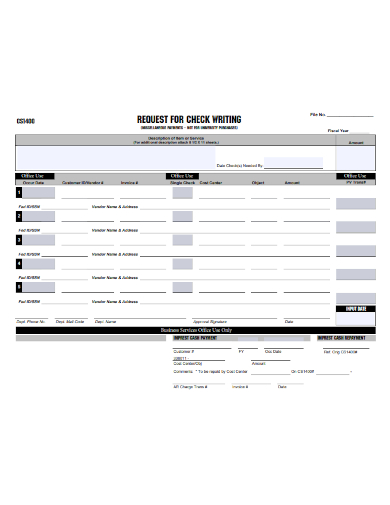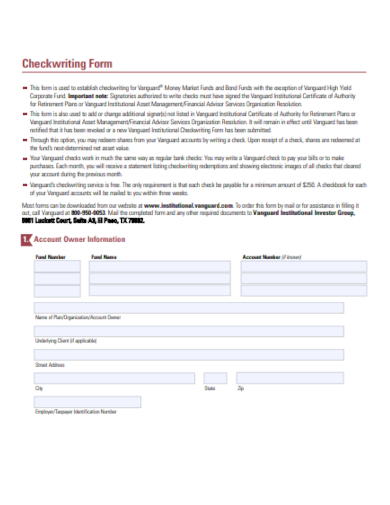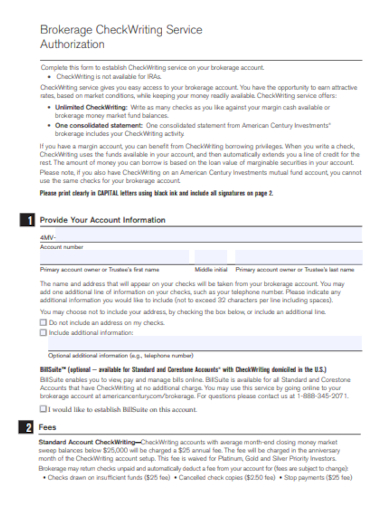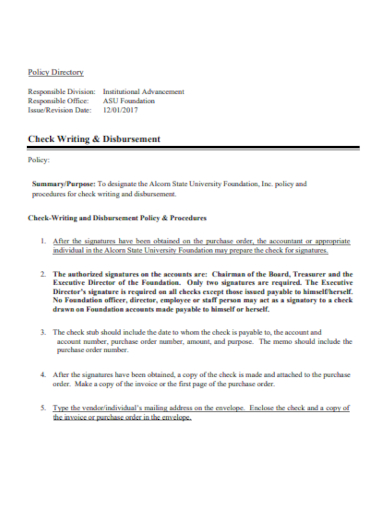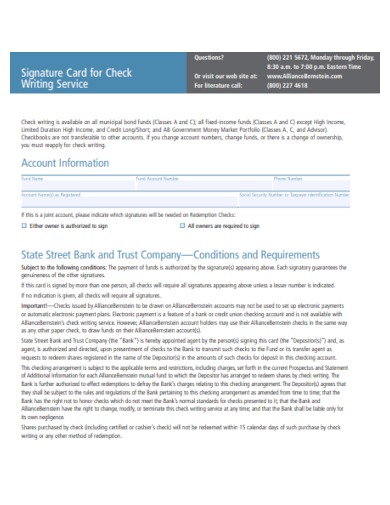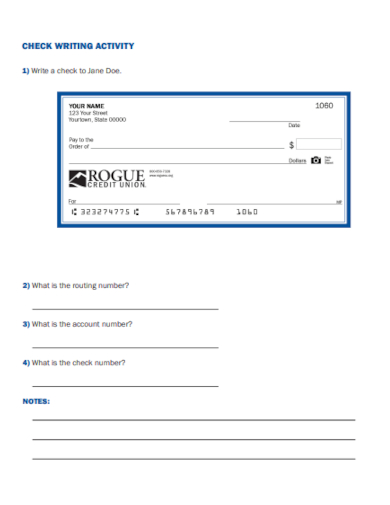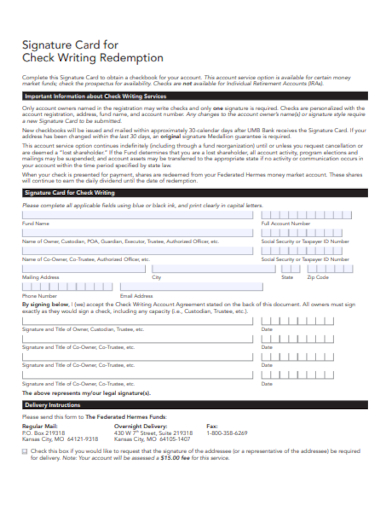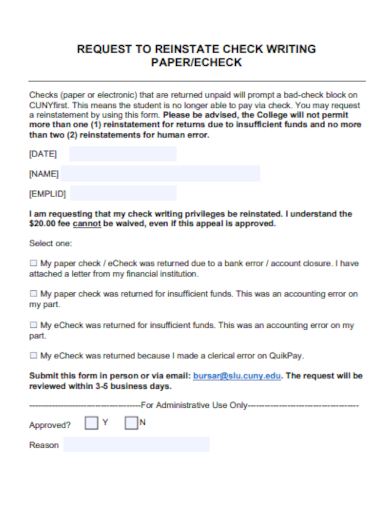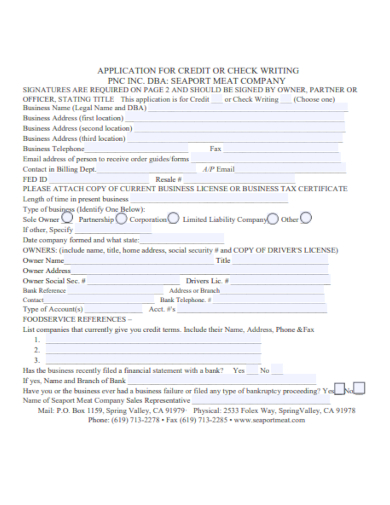Mastering the art of check writing is essential for personal and professional financial transactions. Our Sample Check Writing Template is designed to guide you seamlessly through the process, ensuring clarity, accuracy, and compliance. Whether you’re new to handling checks or simply looking for a refresher, our comprehensive template is your go-to resource. Imbued with best practices and easy-to-follow formats, it promises a hassle-free experience every time you put pen to paper. Dive in and elevate your check writing skills today!
20+ Check Writing Samples
1. Check Writing Template
2. Personal Check Writing Template
3. Bank Check Writing Template
4. Money Check Writing
5. Check Writing Practice Template
6. Checkbook Register Writing Template
Why Do You Need a Check Template?
In the digital age, one might wonder about the relevance of checks. However, despite the rise of online banking and electronic funds transfers, checks remain an integral part of the financial landscape. For individuals, businesses, and organizations alike, check writing is sometimes indispensable. Herein lies the value of a check template. Let’s explore the reasons why having a check template is not only beneficial but at times, essential.
Accuracy and Consistency: A check template provides a standard format for all checks you issue. It ensures that essential details like the payee’s name, amount, date, and signature are consistently positioned and clearly written. This uniformity makes it less likely that errors will creep in, which could lead to returned checks or misunderstandings.
Professional Appearance: For businesscv es, image matters. Using a check template can give your checks a more professional look, reflecting positively on your brand. When vendors or partners receive a cleanly formatted, standardized check, it exudes a sense of organization and reliability.
Time-saving: Once you’ve set up a check template, writing checks becomes a quicker task. Instead of starting from scratch each time, you simply fill in the necessary details. Over time, this can save you a considerable amount of minutes, which can accumulate to hours, especially for businesses that issue checks regularly.
Training Tool: For those new to the realm of finance or perhaps young adults just starting to navigate the world of banking, a check template serves as an excellent training tool. It can help familiarize them with what information is required and where it should be placed, instilling good habits from the outset.
Reduction of Fraud Risks: Mistakes or ambiguities on checks can sometimes be exploited for fraudulent activities. A clear, standardized check format reduces the chances of such mishaps. Furthermore, if you consistently use a template, it becomes easier to spot anomalies or unauthorized changes.
Cost Efficiency: Some businesses opt to use pre-printed checks from professional printing services. While these can indeed be of high quality, they also come with recurring costs. By using a check template and printing checks in-house, businesses can achieve a balance between professionalism and cost-efficiency.
Flexibility and Customization: One of the major advantages of using a check template is the flexibility it offers. Whether you want to change your business logo, address, or any other details, you can easily modify the template to suit your current needs, ensuring that your checks are always up-to-date.
Record Keeping: Using a consistent check template can streamline the record-keeping process. With all checks following the same format, it’s simpler to file them or digitally archive them. This consistency aids in quick retrieval and review, which is especially valuable during audits or financial reviews.
While the digitization of financial transactions continues to evolve, the humble check retains its place in various scenarios, be it personal gifts, business transactions, or charitable donations. In this context, a check template emerges as a valuable tool, offering a blend of professionalism, accuracy, and convenience. Whether you’re an individual looking to perfect your check-writing skills or a business aiming for efficiency and precision, a check template is a resource worth considering.
7. Pay Check Writing Template
8. Sample Check Writing Template
9. Check Writing Application
10. Check Writing Description
11. Request for Check Writing
12. System Check Writing
13. Check Writing Form Template
Types of Checks
The world of banking offers a variety of checks, each tailored to specific needs and scenarios. Understanding the differences between these checks is crucial for both individuals and businesses to make informed decisions regarding their financial transactions. Here’s a breakdown of the various types of checks available:
Personal Checks:
These are the most common types of checks issued by individuals. They are drawn against personal bank accounts and are typically used for everyday transactions, such as paying bills or giving personal gifts.
Business Checks:
Used by companies, these checks are drawn from a business’s bank account. They often have a larger format and can include the company’s logo and other branding elements. Businesses use these checks to pay vendors, employees, or other operational expenses.
Cashier’s Checks:
Also known as a bank check, a cashier’s check is guaranteed by the bank that issues it. When a customer requests this check, the bank withdraws the specified amount from the customer’s account and then issues the check. It’s considered more secure than a personal check because the funds are guaranteed by the bank, making it a preferred choice for larger transactions.
Money Orders:
Similar to cashier’s checks in terms of security, money orders are pre-paid checks. You pay the specified amount upfront, plus a fee, and then receive a money order for the amount. They are available at banks, post offices, and some retail stores.
Certified Checks:
This is a personal check that’s certified by the bank. The bank verifies that the account holder has sufficient funds and then sets aside the check amount. The check is stamped as “certified,” assuring the payee that the funds are available.
Traveler’s Checks:
Designed for individuals traveling abroad, traveler’s checks are pre-printed, fixed-amount checks that function as a secure alternative to cash. If lost or stolen, they can be replaced, offering peace of mind to travelers.
Electronic Checks (E-checks):
E-checks represent an electronic version of the traditional paper checks. They allow funds to be electronically transferred from the payer’s checking account to the payee. E-checks are often used for online transactions and are considered quicker and more efficient than their paper counterparts.
Blank Checks:
These checks do not have any specified amount, date, or payee. They are signed by the drawer, allowing the payee to fill in the details. It’s essential to exercise caution when using blank checks due to the potential risk of misuse.
Counter Checks:
These are checks provided by the bank at the counter, especially when a customer has run out of personal checks. They typically don’t have personal information printed on them, like your address, and are meant for immediate, temporary use.
Payroll Checks:
Used by businesses, these checks are issued to employees for their wages or salary. They can be cashed or deposited into the employee’s bank account.
Third-Party Checks:
These are checks written to one person (the first party) who then endorses it to another person (the third party). Some banks might be hesitant to cash third-party checks due to fraud concerns.
In summary, the landscape of checks is vast and varied, with each type tailored to specific financial needs and scenarios. Recognizing the differences and nuances of each check type can help individuals and businesses make informed decisions, ensuring smooth and secure transactions. Whether you’re making a major purchase, traveling, or managing business expenses, there’s a check designed for every situation.
14. Signature Card for Check Writing
15. Check Writing Service Authorization
16. Check Writing Disbursement Policy
17. Signature Card for Check Writing Service
18. Check Writing Activity
19. Signature Card for Check Writing Redemption
20. Request for Paper Check Writing
21. Application for Company Check Writing
Steps for Writing a Check
Writing a check is a fundamental skill, and while it may seem straightforward, it’s crucial to ensure accuracy to avoid potential financial misunderstandings or fraud. Here’s a step-by-step guide to correctly fill out a check:
Date the Check:
Start by writing the current date in the space provided, usually located at the top right corner of the check. Ensure that the date is correct, as post-dated checks (those with a future date) won’t be cashed until the specified date.
Payee Line:
Write the name of the person or organization to whom you are paying money in the “Pay to the order of” line. Always double-check the spelling, especially with unfamiliar names or organizations, to ensure the right party can cash or deposit the check.
Amount in Numbers:
In the box next to the payee line, write the amount you are paying in numerical form. Make sure you clearly denote the dollars and cents, for example, $123.45. Ensure there’s no space between the number and the dollar sign to prevent fraud.
Amount in Words:
On the line beneath the payee’s name, spell out the dollar amount you wrote in the box. If the check is for $123.45, write “One hundred twenty-three and 45/100”. Always write the word “and” before the cent amount, which should be written as a fraction out of 100. Draw a line from the end of your written amount to the word “Dollars” to prevent anyone from adding extra numbers.
Memo Line (Optional):
The memo line, located at the bottom left of the check, is a space for a reminder or additional information about the purpose of the check. For example, if you’re paying rent, you might write “March Rent” in this section. For personal checks, it could be a simple note like “Birthday gift.”
Signature:
Sign the check on the line located at the bottom right. Your signature should match the one on file at your bank. Without a valid signature, the check won’t be processed.
Check Number and Routing Information:
Note that every check has unique routing numbers at the bottom. The first set (usually 9 digits) is the bank’s routing number, and the second set is your account number. The third, shorter set of numbers is the check number, which matches the number at the top right of the check. While you don’t “write” these in when filling out a check, it’s essential to be aware of them, especially if someone asks for your routing or account number.
Review:
Before handing over the check, double-check all the details. Ensure the names, numbers, and other information are correct and legible. A small oversight can cause the check to be rejected, or worse, misused.
In conclusion, writing a check is a straightforward process, but it demands meticulous attention to detail. By ensuring every part of the check is filled out correctly, you not only safeguard your finances but also ensure a smooth transaction for both the payer and payee. As checks continue to be a staple in many financial transactions, understanding how to properly complete one remains an invaluable skill.
Related Posts
Sample Business Card Templates
Sample Cashier Job Descriptions
Questionnaire Samples
FREE 10+ Sample HR Resource Templates in PDF
FREE 10+ HR Consulting Business Plan Samples in MS Word | Google Docs | Pages | PDF
FREE 49+ Sample Job Descriptions in PDF | MS Word
FREE 16+ Nonprofit Budget Samples in PDF | MS Word | Excel | Google Docs | Google Sheets | Numbers | Pages
FREE 13+ Academic Calendar Templates in Google Docs | MS Word | Pages | PDF
FREE 10+ How to Create an Executive Summary Samples in Google Docs | MS Word | Pages | PDF
FREE 23+ Sample Event Calendar Templates in PDF | MS Word | Google Docs | Apple Pages
Company Profile Samples
FREE 10+ Leadership Report Samples [ Development, Training, Camp ]
FREE 24+ Sample Payment Schedules in PDF | MS Word
FREE 10+ Return to Work Action Plan Samples in PDF | DOC
Autobiography Samples & Templates
